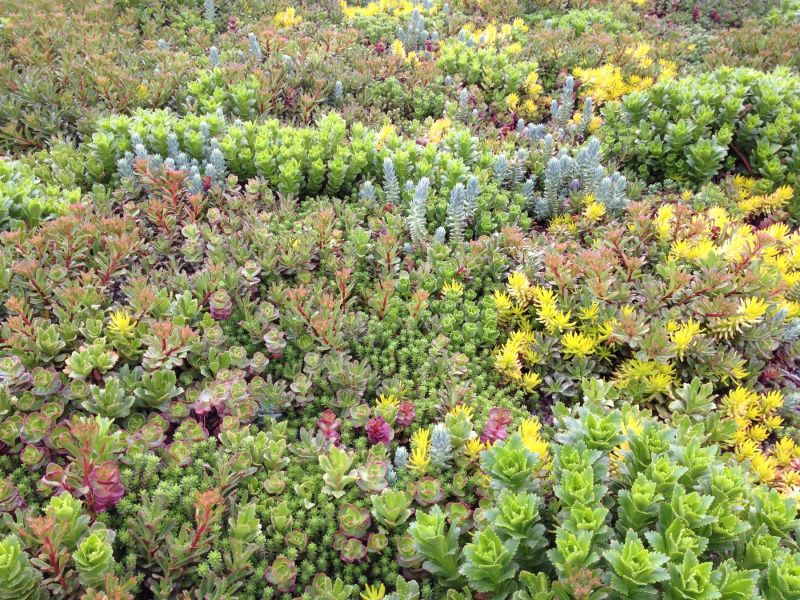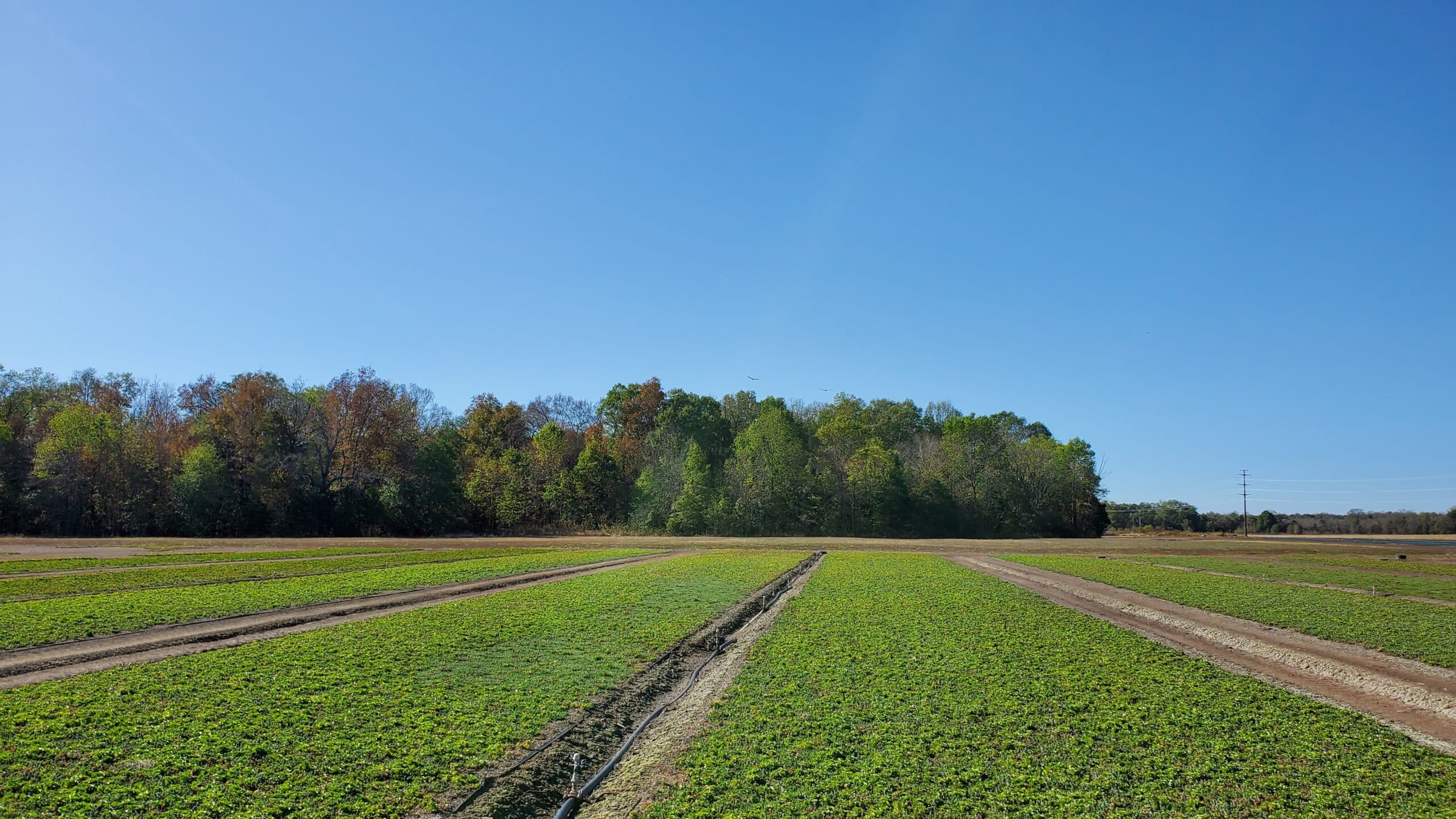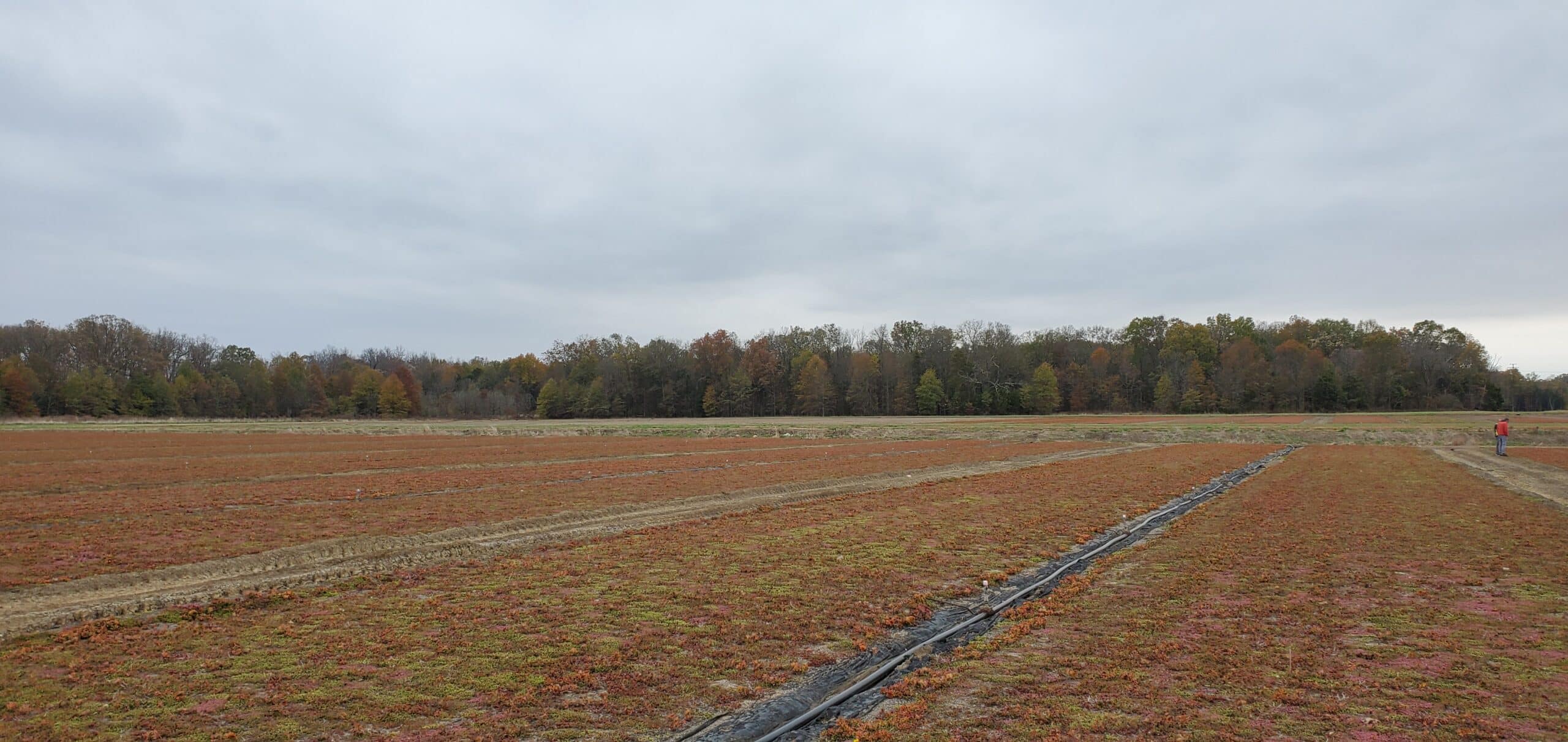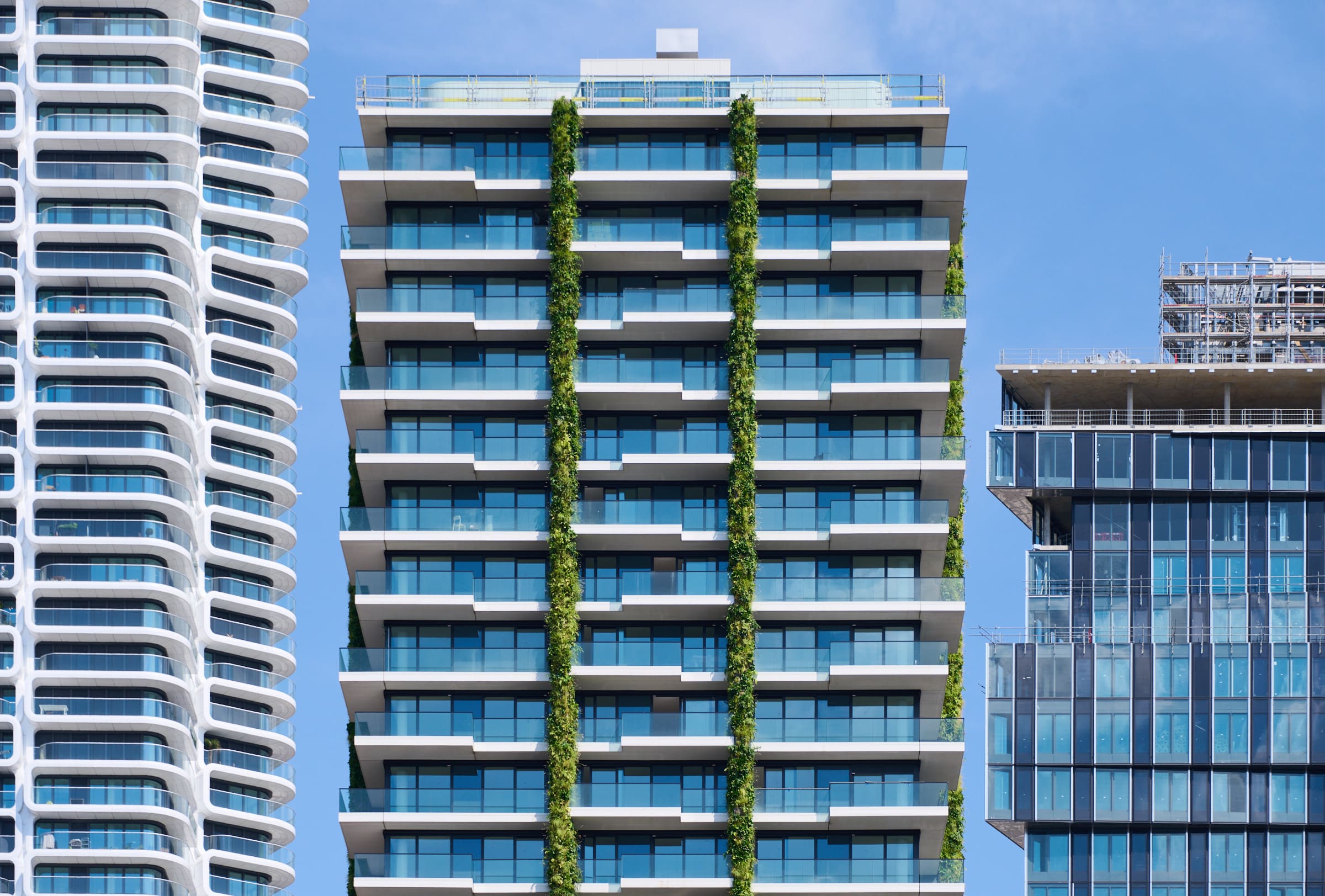What is Sedum?
Let’s start with the Sedum plant itself. Sedum, also known as stonecrop, is a diverse genus of succulent plants that thrive in various climates, from hot and humid southern states to temperate coastal regions and even the cold, snowy North. These hardy perennials belong to the Crassulaceae family and are known for their ability to store water in their thick, fleshy leaves, making them exceptionally drought-resistant. There are over 400 species of Sedum, ranging from low-growing ground covers to taller varieties with striking, upright stems. In green roofs, primarily low-growing Sedum species are used, as they form a dense, soil-covering blanket without adding excessive weight. Sedum is a slow-growing plant, which means it requires little to no pruning, making it an excellent low-maintenance choice for sustainable roofing.
The colors of Sedum
Sedum plants come in a variety of colors, including vibrant greens, deep reds, golden yellows, and even pretty pinks, depending on the species and seasonal changes. The color of Sedum leaves can change throughout the year, influenced by factors such as temperature, sunlight, and water availability. During warmer months, many species display bright green or yellowish tones, while in colder seasons, they may develop reddish or purplish hues as a natural response to environmental stress.
In addition to their colorful foliage, many Sedum species bloom in late spring and summer, producing delicate, star-shaped flowers in shades of white, pink, red, or yellow. These flowers not only enhance the visual appeal of a green roof but also serve as an important nectar source for bees, butterflies, and other pollinators. Some species, such as Sedum spurium and Sedum album, are particularly known for their striking seasonal transformations, shifting from lush green in spring to fiery red in fall.
Their resilience, adaptability, and minimal maintenance needs make them an ideal choice for green roofs, providing year-round visual interest and ecological benefits. Their ability to change color with the seasons adds an extra layer of visual dynamism, while their dense growth contributes to cooling in summer, stormwater management, and biodiversity support.
When to install a Sedum Roof?
A Sedum roof can be installed any time of the year, except during prolonged frost. However, the timing of installation can influence early maintenance needs and overall establishment success. Choosing the right season can help optimize costs and ensure a smooth transition for the plants.
Spring & Fall: Ideal for installation due to moderate temperatures and regular rainfall. The natural moisture in the air reduces the need for frequent irrigation, which lowers water consumption and labor costs. Additionally, the plants have ample time to establish their root systems before facing extreme heat or cold.
Summer: Installation in summer is possible but requires extra attention to watering, especially during dry or heatwave periods. Since Sedum is drought-resistant, it can handle warm conditions, but initial irrigation is crucial to help the plants take root. Installing a green roof during summer may involve higher water usage, increasing short-term maintenance efforts.
Winter: In mild climates, a Sedum roof can still be installed in winter, provided there is no prolonged frost. While the plants remain dormant during the colder months, they will start growing once temperatures rise. Installation during extreme cold or snowfall should be avoided, as frozen soil can make root establishment difficult.
For the best results, it’s essential to consider not only seasonal weather conditions but also factors like local climate and roof accessibility. Proper planning ensures that your Sedum roof establishes itself efficiently, minimizing costs and maximizing long-term benefits.
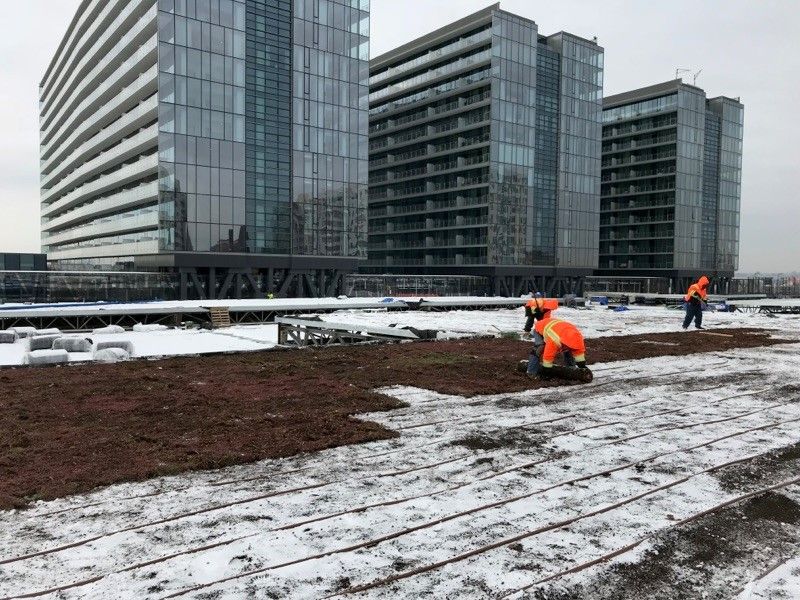
Sky View Parc Flushing, NY Installation in winter time
“Now, let’s explore how your Sedum roof evolves through winter, spring, summer, and fall.”
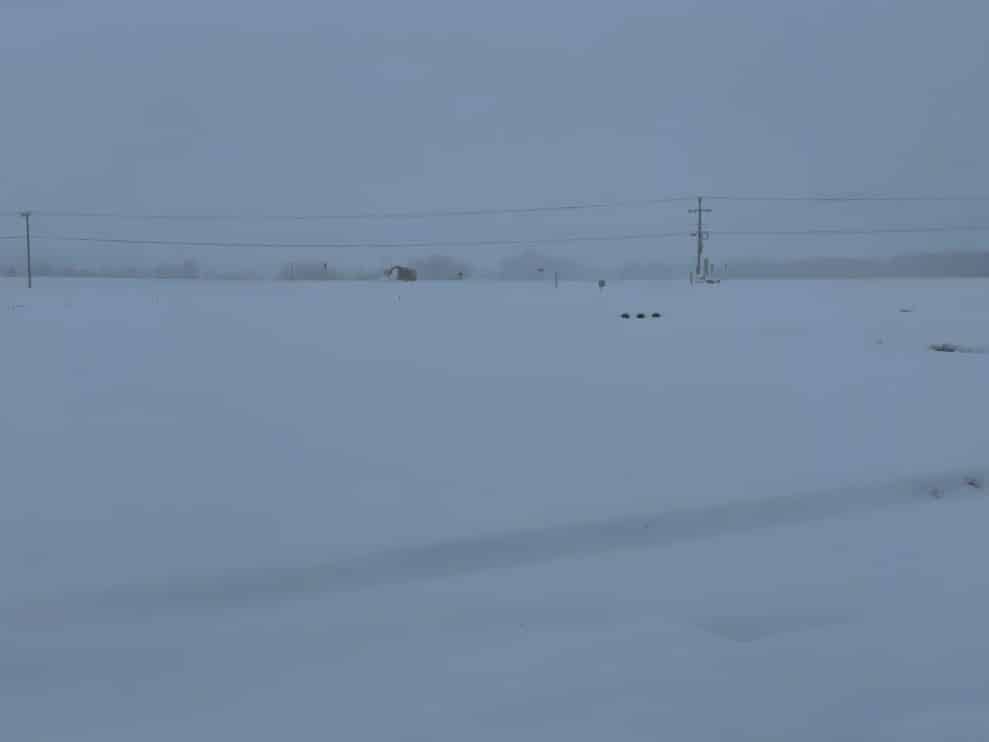
Sedum in winter: dormant, but resilient
Sedum in winter: dormant, but resilient
Winter is the time for Sedum hibernation. Despite the cold, Sedum in winter remains remarkably resilient. The plants enter dormancy, with their roots staying inactive until spring. Even heavy frost won’t damage your Sedum roof—this hardy plant can withstand extreme temperatures.
Snow? No problem! In fact, snow acts as a natural insulator, protecting the plants and keeping the soil temperature stable. Plus, as the snow melts, it provides much-needed moisture for the roof.
Winter maintenance considerations: minimal maintenance, maximum durability!
✔ No need for irrigation
✔ Snow is beneficial—avoid manually removing it to prevent damage.
✔ If heavy rainfall occurs, check drainage to prevent potential structural issues.
ROI Insight: No active maintenance costs in winter means this season has the lowest upkeep expenses.
Sedum in spring: a fresh start and a burst of color
With the arrival of spring, temperatures start to rise and your Sedum roof begins to wake up. Initially, it may appear green and fresh, but if the winter was particularly dry, some plants may take on a reddish hue. A quick watering will restore their vibrant color.
By late April, it is the best time for annual inspections and fertilization to ensure plant health and longevity. Inspect the roof for fallen leaves or debris and manually remove any weeds.
May marks the start of flowering season for many Sedum species, attracting pollinators like bees and butterflies. Birds also take advantage of the green roof, sometimes using it as a nesting site.
Spring maintenance considerations: inspection and growth management
✔ Fertilization (Late April): A one-time investment in nutrients improves plant growth and longevity.
✔ Weed Removal: Prevents invasive species from taking over and reduces future maintenance costs.
✔ Drainage Check: Ensures gutters and downspouts are clear to handle seasonal rain.
ROI Insight: Investing in spring maintenance extends the lifespan of the Sedum.
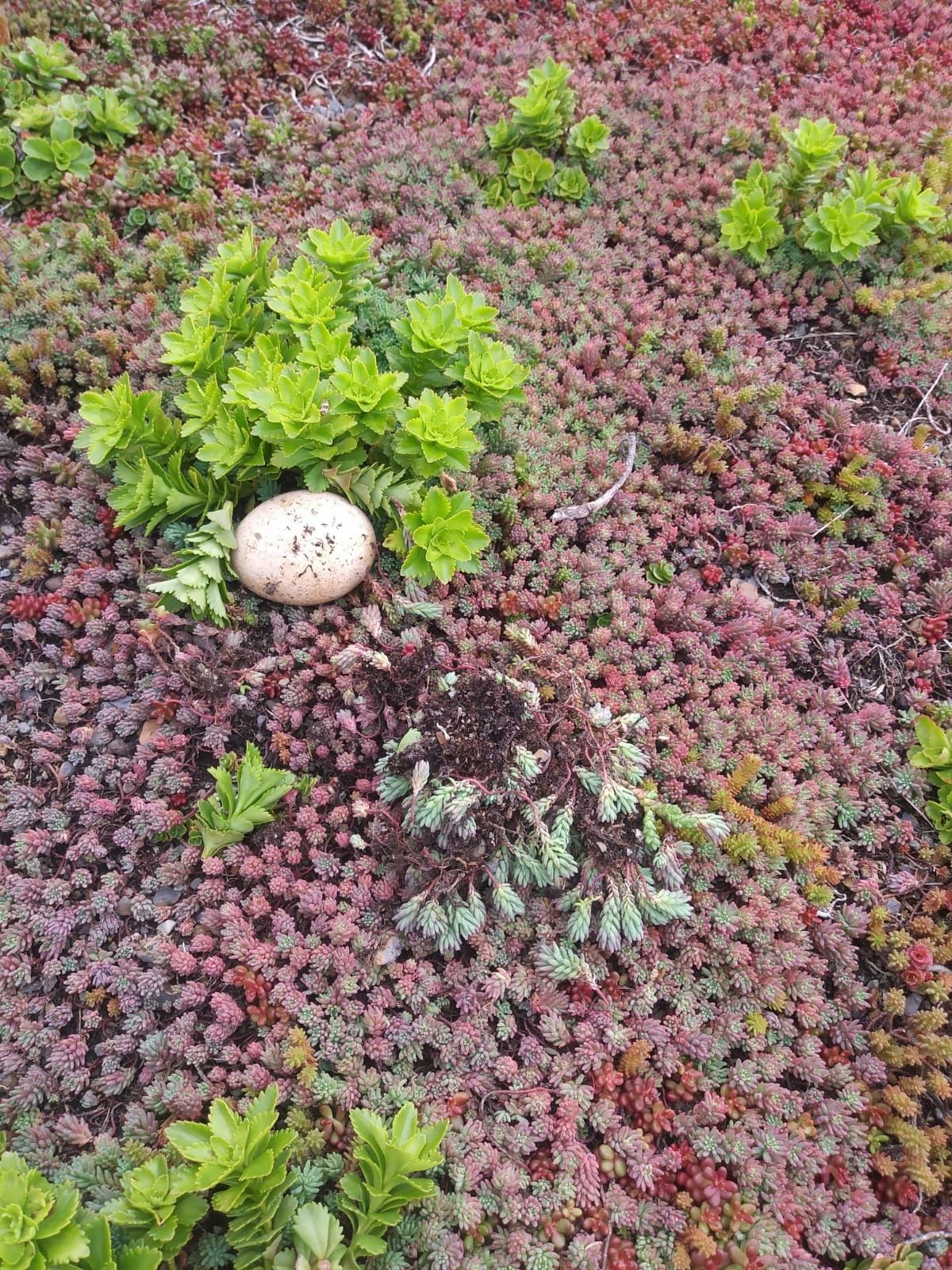
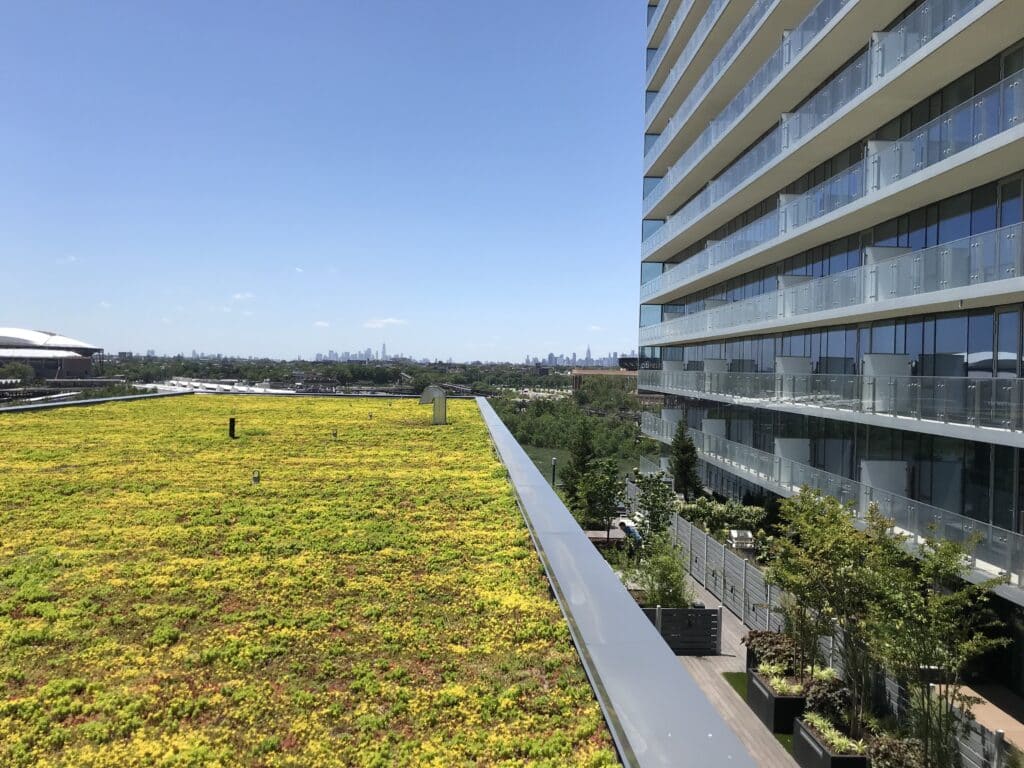
Sedum in summer: a vibrant display of blooms attracting bees and butterflies
Summer Maintenance Considerations: heat management and irrigation
✔ Irrigation during drought: Watering during prolonged dry spells prevents plant from turning red and maximizes cooling efficiency.
✔ Avoid overwatering: Too much water leads to unnecessary costs and can weaken plants.
ROI Insight: Proactive watering helps maintain the roof’s aesthetic value, preserving property appeal and rental demand.
Summer is when Sedum roofs hit peak flowering. As temperatures rise, more Sedum species start to bloom, creating a sea of flowers in shades of pink, yellow, and white. This is the prime season for bees, butterflies, and other pollinators, making your green roof an essential habitat for urban biodiversity. While Sedum plants are drought-resistant, during extended dry spells in summer Sedum may turn reddish as a natural response to drought. Watering during long dry periods will keep the plants green and help maintain the cooling effect of the green roof on hot days.on has the lowest upkeep expenses.
Sedum in fall: the best season for rainwater retention
Even in September, your Sedum roof will still attract bees and insects looking for the last traces of nectar. However, the main role of the Sedum in fall shifts toward rainwater management. A green roof retains large amounts of rainwater, reducing pressure on stormwater drainage systems and minimizing runoff.
To prepare for winter, another round of fertilization in early September is recommended. This strengthens the plants for the colder months ahead. A second roof inspection should also be done at this time to clear out any accumulated debris.
Fall Maintenance Considerations: preparing for the next growth cycle
✔ Final fertilization (early September): Helps plants store energy for winter.
✔ Gutter cleaning: Essential for stormwater control, preventing blockages.
✔ Final Inspection: Addressing minor issues now prevents higher repair expenses in the spring.
ROI Insight: A small investment in fall maintenance protects the roof’s longevity and ensures cost-efficiency in the following year.
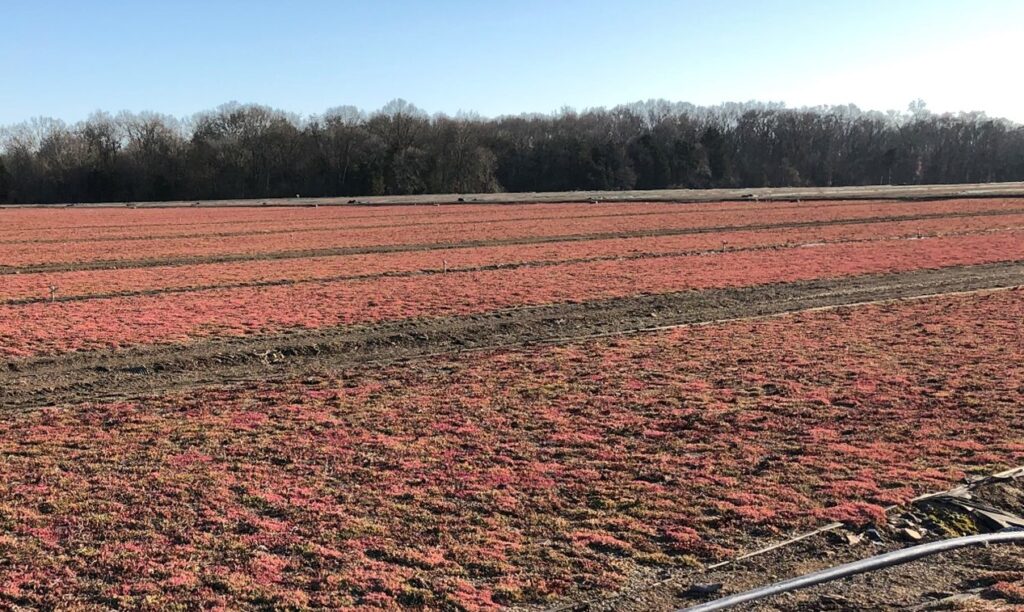
Managing a Sedum roof year-round for maximum ROI
No matter the season, a Sedum green roof provides year-round benefits—from cooling in summer to stormwater retention in fall. Understanding how Sedum changes throughout the year helps property owners plan maintenance budgets efficiently.
One of the biggest advantages of a Sedum roof is its low-maintenance nature. Thanks to the plant’s slow growth and natural resilience, there’s no need for regular pruning or intensive care. Occasional weeding, biannual fertilization, and ensuring proper drainage are usually sufficient to keep the roof in top condition. Unlike traditional gardens, Sedum roofs require minimal irrigation, even in warmer months, making them a cost-effective and sustainable solution for urban greenery. With just a small amount of upkeep, your green roof will continue to thrive for decades, enhancing both property value and environmental impact.
Want to know more?
Interested in installing a Sedum roof or looking to maximize the lifespan and efficiency of your green roof? Contact our team for tailored maintenance strategies that protect your investment year-round. We’re happy to help you make the most of your green roof!
